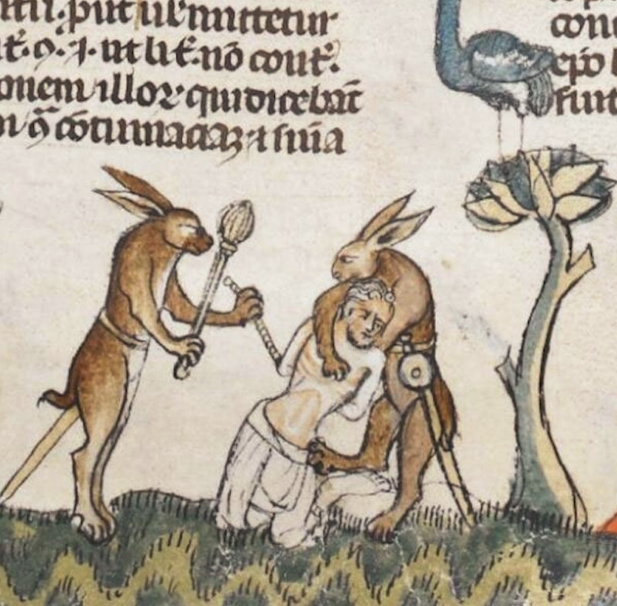Why Are There Killer Rabbits in Medieval Manuscripts?
Why do so many images drawn in the margins of medieval manuscripts depict frantic rabbits?
Is there any other creature in nature that is less threatening to us than the sweet and docile rabbits? Although this question may seem purely rhetorical to us these days, our ancestors who lived in the Middle Ages, who could read and even draw manuscripts, took this issue much more seriously.
“In medieval manuscripts we often find all sorts of monsters, half-human and half-animal beings, strange drawings such as apes,” notes Marjolein de Vos. he adds.

De Vos notes that hunting scenes are common in medieval manuscripts and that “rabbits are game animals” in these scenes, but as his discoveries show, the artists in some manuscripts decided to “switch roles” in these depictions.
Jon Kaneko-James explains: “The usual symbol of the rabbit in medieval art is purity and desperation – which is why some medieval depictions of Jesus show innocent little white and brown rabbits in their own right.”
But the creators of this particular humorous genre known as drollery had a different take on things.
According to Kaneko-James, “Drollers sometimes also depicted comedic scenes, such as a barber with a wooden leg, or a man cutting the branch he was sitting on. This enjoyment of “turning the world upside down” produced the type of drollery called “revenge of the rabbit”, often used to show the cowardice or stupidity of the person depicted.

“We see this in Stickhare, a medieval English nickname for cowards, and in depictions of fierce hunters squashing with their big sticks in the face of rabbits.”
We also have rabbits that attack while mounted on the back of snails. Snail fights are “another popular drollery where groups of villagers fight snails with sticks, saddle them, and try to drive them.”
Considering how difficult 21st century residents have to understand the humor of even a century ago, it is indeed a satisfying feeling to have fun and laugh at these drolleys, like our medieval ancestors. Contrary to the times when only wealthy individuals and institutions could have illustrated manuscripts, today, thanks to their rapid circulation on social media, it is quite easy to come across and access these drawings.
But a historical question remains unanswered: to what extent did these manuscripts influence “Monty Python and the Holy Grail,” the cornerstone of modern cinematic comedy?
https://youtu.be/TnOdAT6H94s

